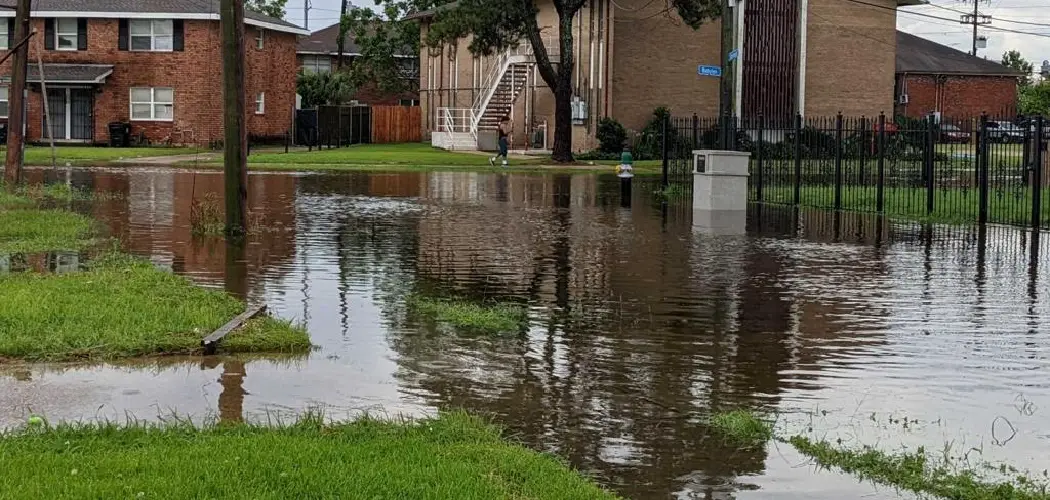A flooded driveway not only creates a messy and inconvenient situation but can also lead to more serious problems like erosion, property damage, and potential safety hazards. Whether you’re dealing with heavy rains, snowmelt, or poor drainage in your area, finding effective ways to prevent your driveway from flooding is essential. In this article, we’ll delve into how to stop driveway from flooding.
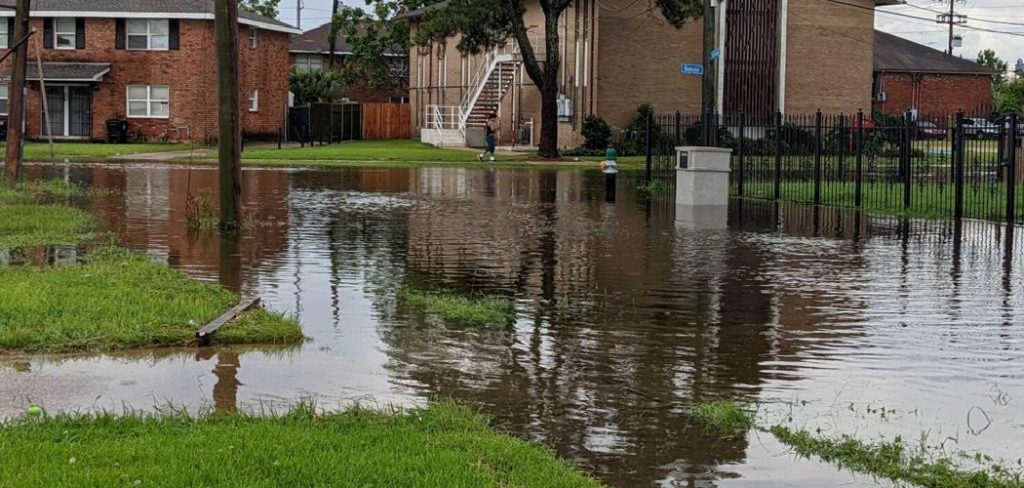
From proper grading and drainage systems to the installation of permeable materials and the use of strategic landscaping, we’ll provide valuable insights and practical tips to keep your driveway dry and functional year-round. Whether you’re a homeowner looking for DIY solutions or considering professional assistance, this guide will empower you to take the necessary steps to safeguard your driveway against the perils of flooding, ensuring a hassle-free and safe passage to your home.
Importance of Preventing Driveway Flooding
Flooding can be a major issue for homeowners, and it’s not limited to just the inside of your house. In fact, one of the most common areas that experience flooding is outside in your driveway. Heavy rain, melting snow, or even clogged drainage systems can all contribute to a flooded driveway. This may seem like a minor inconvenience at first, but if left unaddressed, it can cause serious damage and even safety hazards.
Prevents Property Damage
One of the main reasons why preventing driveway flooding is important is to avoid property damage. When water accumulates in your driveway, it can seep into your home’s foundation, causing cracks and weakening the structure. It can also damage any vehicles parked in the driveway, as well as any landscaping or structures nearby. Additionally, prolonged flooding can lead to mold growth which can be costly to remove and may pose health risks.
Ensures Safety
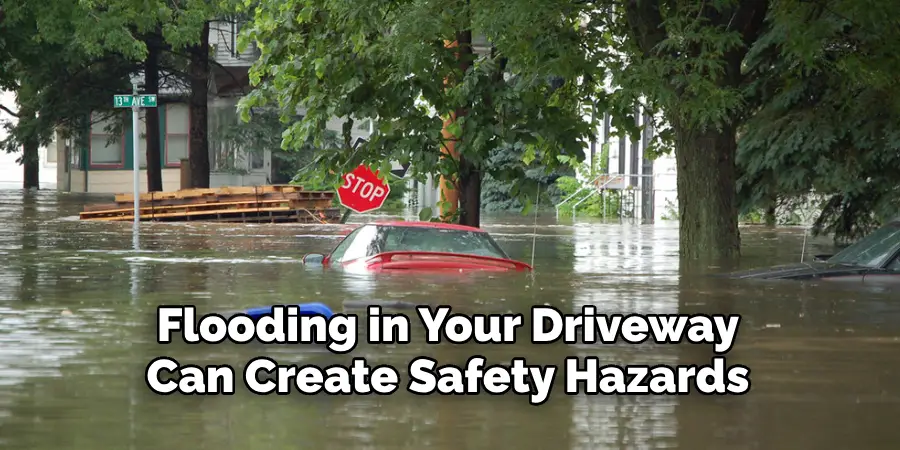
Flooding in your driveway can create safety hazards for both you and your family. Standing water can become slippery, making it easy to slip and fall. This is especially dangerous for children and elderly individuals who may have difficulty walking on wet surfaces. It can also hide potential hazards such as debris or sharp objects, increasing the risk of injuries. Furthermore, if the water reaches high enough levels, it can even pose a drowning risk.
Prevents Costly Repairs
Dealing with driveway flooding can be costly, especially if it leads to structural damage or mold growth. Not only will you have to spend money on repairs, but you may also have to deal with the inconvenience of not being able to use your driveway until the issue is resolved. This can also decrease the value of your property if you ever decide to sell.
10 Methods How to Stop Driveway from Flooding
1. Install a Drainage System
The best way to prevent driveway flooding is to install a drainage system. This can be done by digging trenches around the perimeter of the driveway and connecting them to a drainage pipe that runs away from the house. The trenches should be filled with gravel or crushed stone to help direct water away from the driveway and into the pipe. Additionally, you may want to consider installing a sump pump at the lowest point of your driveway, which will help pump any excess water away from your property.
2. Create a Swale
A swale is an artificial depression in the ground that helps divert water away from an area. To create one on your property, dig out a shallow trench along the edge of your driveway and fill it with soil and mulch. The soil will absorb any excess water and help direct it away from your driveway and onto other parts of your property where it can safely drain away.
3. Plant Trees & Shrubs
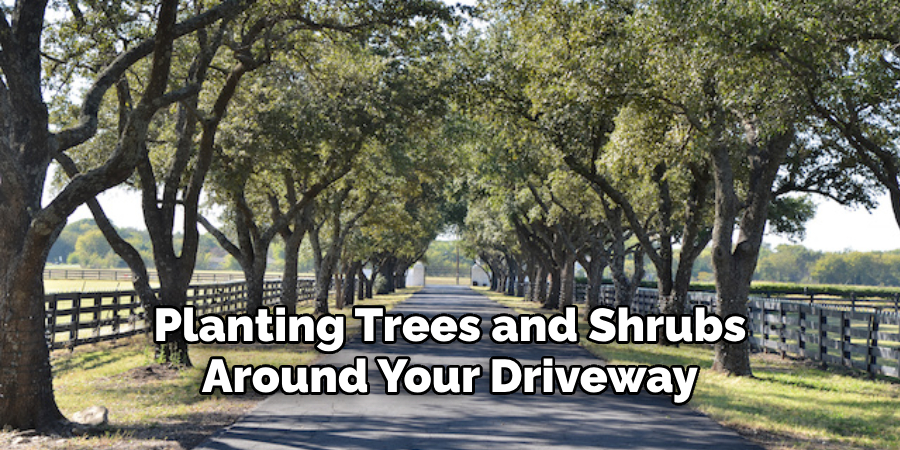
Planting trees and shrubs around your driveway can help reduce flooding by absorbing some of the excess water before it reaches your pavement. Choose plants that are native to your area, as they will require less maintenance and be more resistant to disease and pests. Additionally, make sure to select plants that are well-suited for wet conditions, as they will be better able to withstand periods of heavy rain without becoming flooded themselves.
4. Add Gutters & Downspouts
Adding gutters and downspouts around the perimeter of your home can also help prevent flooding in your driveway by diverting rainwater away from it before it has a chance to pool up on the pavement. Make sure to keep these gutters clear of debris such as leaves, twigs, and dirt so they can effectively channel water away from your home’s foundation and into nearby storm drains or natural waterways where it can safely drain away without causing damage or flooding issues in other areas.
5. Construct Retaining Walls
Retaining walls are structures built along slopes or embankments that help keep soil in place while preventing runoff from washing down onto lower levels of land below them. If you have an incline leading up to or near your driveway, constructing retaining walls along this slope can help divert water away before it reaches your pavement while also providing additional stability for any soil or earth above it that could otherwise wash down into lower areas during periods of heavy rain or melting snowfall each year.
6. Grade Your Driveway
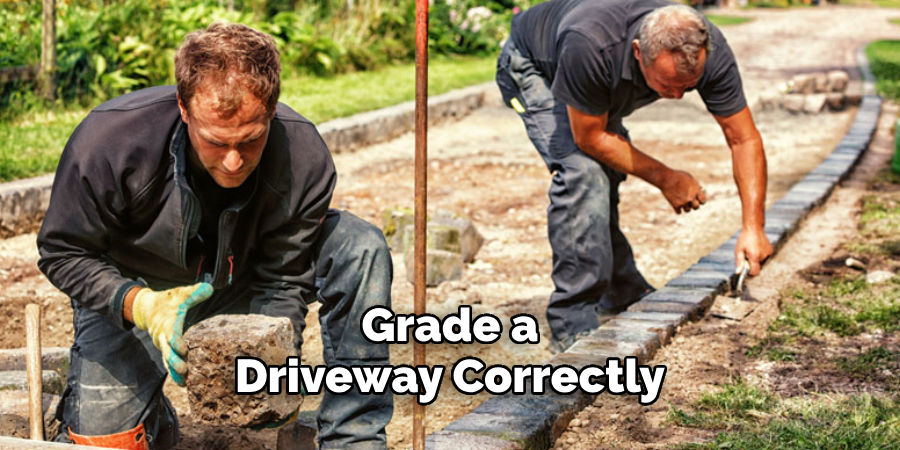
Grading is another effective method for preventing flooding in driveways, as it helps direct runoff away from paved surfaces while also improving overall drainage throughout the area surrounding them. To grade a driveway correctly, start by measuring its current slope using a level tool, then adjust accordingly until you achieve an even grade all around its perimeter with no low spots where standing water could accumulate during periods of heavy rainfall or snowmelt each year.
7. Install Permeable Paving Materials
Permeable paving materials such as gravel, pavers, or permeable asphalt allow rainwater to seep through their surface rather than pooling up on top like traditional asphalt does when exposed to precipitation over time. This type of paving material is especially beneficial for driveways located near bodies of water such as lakes or rivers since they allow runoff from storms or melting snowfall each year to flow directly into these natural sources instead of collecting on top of paved surfaces like traditional asphalt would do.
8. Use Rain Barrels
Rain barrels are containers designed specifically for collecting rainwater runoff off roofs during storms so that this precious resource can be reused later on for things like watering plants in gardens or lawns instead of letting it go straight down drains into sewers. Installing rain barrels around driveways helps collect this runoff before it has a chance to reach paved surfaces, where it could potentially cause flooding issues over time if not properly managed beforehand.
9. Improve Soil Quality
Improving soil quality is another great way to reduce flooding in driveways since healthy soils are able to absorb more moisture than compacted soils due to their higher organic content, which acts like sponges when exposed to precipitation over time. To improve soil quality around driveways, add organic matter such as compost regularly throughout each year, which helps break up compacted soils while also increasing its ability to retain moisture during periods of heavy rainfall each season.
10. Construct Berms & Dikes
Berms & dikes are man-made structures constructed along slopes near driveways that act like dams, helping divert excess runoff from reaching paved surfaces below them during periods of heavy rainfall each season. These structures should be made out of materials such as sandbags, rocks, logs, concrete blocks, etc., depending on the size & scope of the project being undertaken.
Common Mistakes to Avoid in Preventing Flooding
Flooding is a common problem faced by homeowners, especially those living in areas prone to heavy rainfall or near rivers and lakes. One of the most effective ways to prevent flooding is by ensuring that your driveway is properly constructed and maintained.
1. Improper Drainage System Installation

Having a proper drainage system is crucial in preventing your driveway from flooding. Unfortunately, many homeowners make the mistake of installing their drainage systems incorrectly or neglecting them altogether. This can result in water pooling on your driveway and eventually causing damage. It’s essential to consult a professional and have a proper drainage system installed to channel excess water away from your property.
2. Not Maintaining Your Driveway
Regular maintenance is vital in keeping your driveway in good condition and preventing flooding. Neglecting your driveway can result in cracks, potholes, and other damages that can become entry points for water during floods. It’s essential to inspect your driveway regularly and address any issues promptly. Additionally, keeping your driveway clean and free of debris can also help prevent flooding.
3. Poor Slope Design
The slope of your driveway is another critical factor that affects its ability to handle heavy rainfall without flooding. Many homeowners make the mistake of constructing their driveways on a flat surface, which can cause water to pool and eventually seep into their homes during floods. It’s essential to design your driveway with an appropriate slope that allows water to drain off quickly.
Conclusion
To sum up, preventing a driveway from flooding is possible if the right steps are taken. Start by keeping the gutters cleaned regularly and removing leaves. Make sure there’s no unnecessary foliage near the entrance of the driveway as well. These simple steps can help ensure proper overland drainage when it rains or snows. Additionally, consider using trench drainage to separate the water from your driveway.
Lastly, sealcoat your driveway every few years to keep it in its best condition since soggy pavement won’t last nearly as long. By following the tips outlined above, you should be able to avoid flooding of your driveway permanently. So don’t wait any longer and start implementing these steps for how to stop driveway from flooding today–your future self and wallet will thank you for it!

